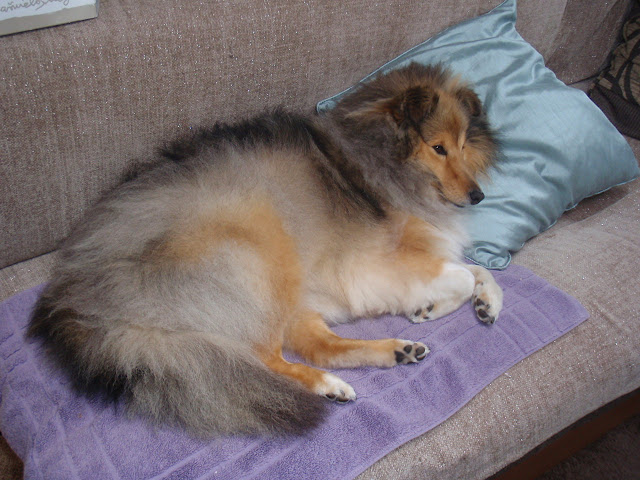The sand streets and hitching posts together with people riding round on horses give it a feel of a Spaghetti Western. There are hitching posts outside all the shops and restaurants! This did cause us a small problem as George has decided that he doesn’t like horses. In fact he doesn’t like anything bigger than him – apart from humans!
Apparently the rest of the year it is a veritable ghost town, its streets almost eerily deserted except for mainly weekend visitors. This is because most of its larger buildings are dedicated to the various hermandades (brotherhoods), which number nearly 100, of Andalucía and are only used around the time of the romería.
Most of the other houses are also only occupied by families who come for the pilgrimage. It's interesting reading the tiled plaques on these houses, which are dedicated to the member of the family who built them. Some say it's worth a visit purely to soak up this rather peculiar and unique atmosphere. Unfortunately it has been raining heavily on & off since we arrived & there are pools of water everywhere so we were not as impressed as we should probably have been.
The huge church, the Ermita or Sanctuario de Nuestra Señora de El Rocío, its size completely at odds with a village the size of El Rocío, dominates the main, rather wet, square. Destroyed in the 1755
Around the church are lots of souvenir shops selling pilgrimage-related paraphernalia. This is also the place to buy the latest fashions for the pilgrimage. These change yearly and the only way to ensure that your flamenco attire is at the cutting edge of the Rocío trend is to buy it here and not elsewhere in Andalucía. Couldn’t convince Janet about this.
El Rocío sits right on the north-western edge of the Parque Nacional de Doñana, it's in an area rich in wildlife. However we found it very uninteresting compared with equivalent places in the
Overall, & apart from
Finally and after this mornings walk, a bath, grooming & lunch, it is time for a dog's siesta!!














No comments:
Post a Comment